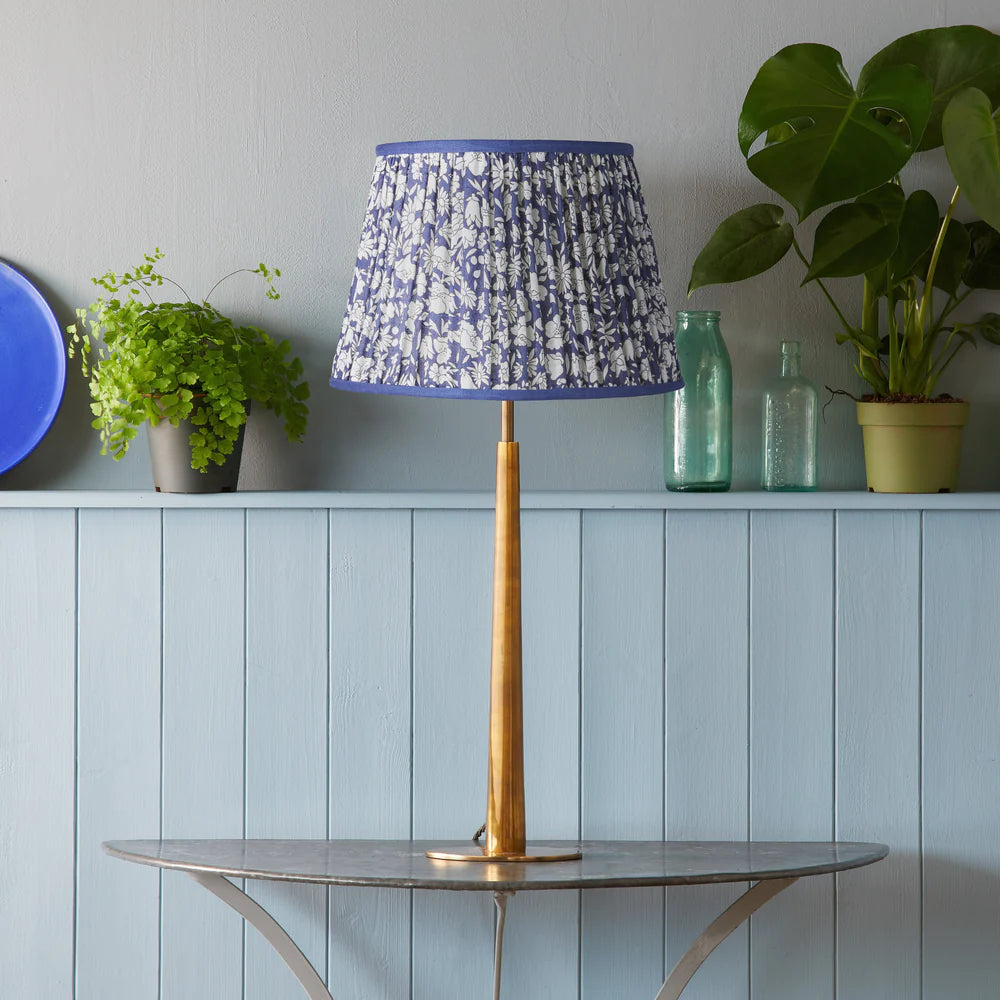 Botanicals are very much in – but then have they ever really been out? Flowers, foliage, plants and trees have been an essential element of interior design forever.
Botanicals are very much in – but then have they ever really been out? Flowers, foliage, plants and trees have been an essential element of interior design forever.
Here’s the story of botanical décor – plus practical design tips and lots of beautiful botanical lighting…
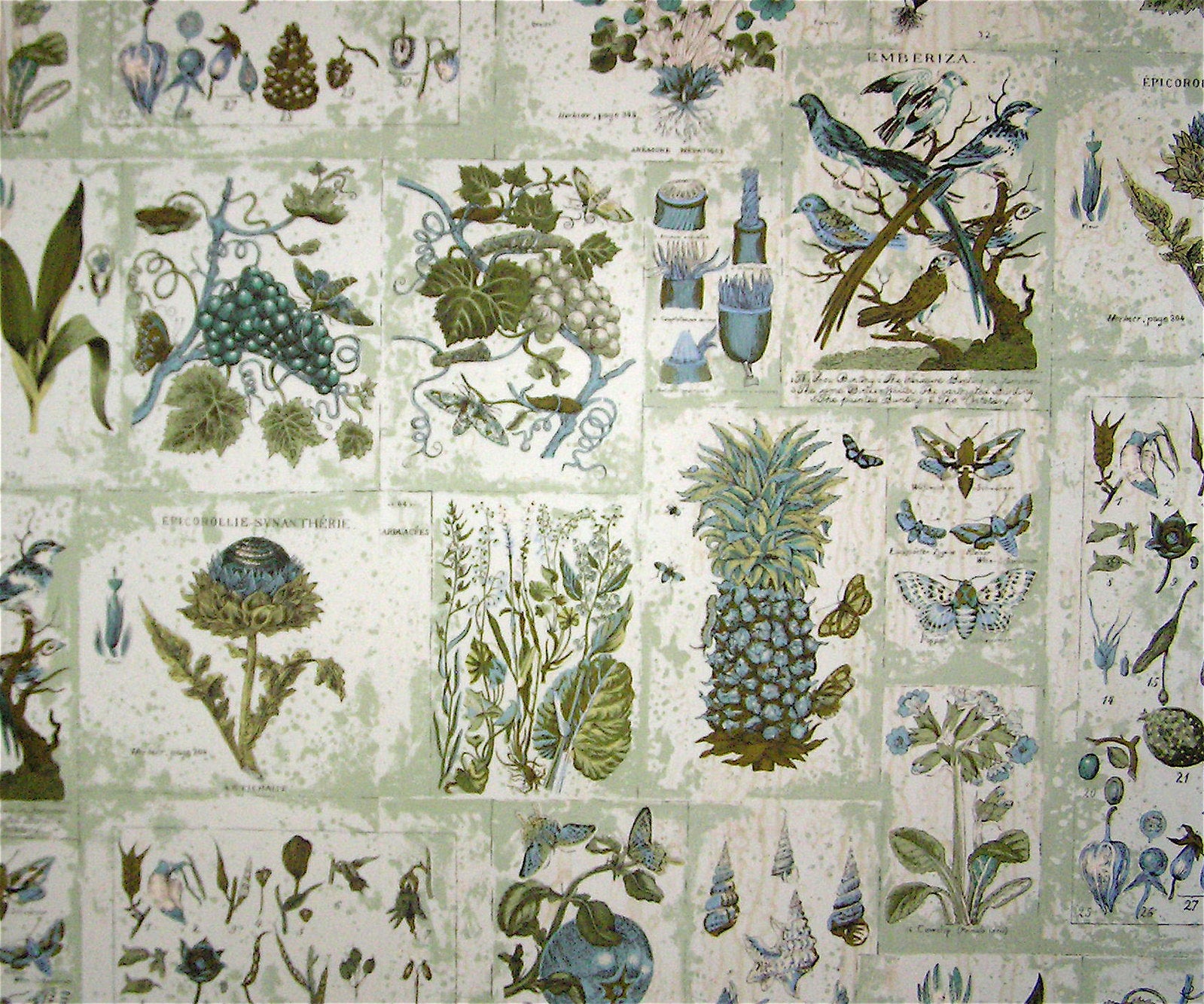 An early American version of botanical wallpaper. Image: Normanack via creative commons
An early American version of botanical wallpaper. Image: Normanack via creative commons
The next time you read something along the lines of “botanicals are having an interior design moment” you might be tempted to raise an eyebrow. If botanicals (think flowers, leaves, plants and trees) are having a moment, then it must rank as one of the longest moments in history because people have been using botanical themes and motifs to decorate their homes, public buildings and sacred spaces for thousands of years.
The botanical interior design journey is a fascinating one, evolving as it has through different cultures, geographical regions, and major design movements, to the bold vibrancy we have embraced in recent years.
At Pooky we are absolutely unashamed lovers of all things botanical. It’s a recurring theme on our Instagram feed and you’ll find an embarrassment of botanical riches in our lighting and lampshade ranges.
Botanical interior design through the ages
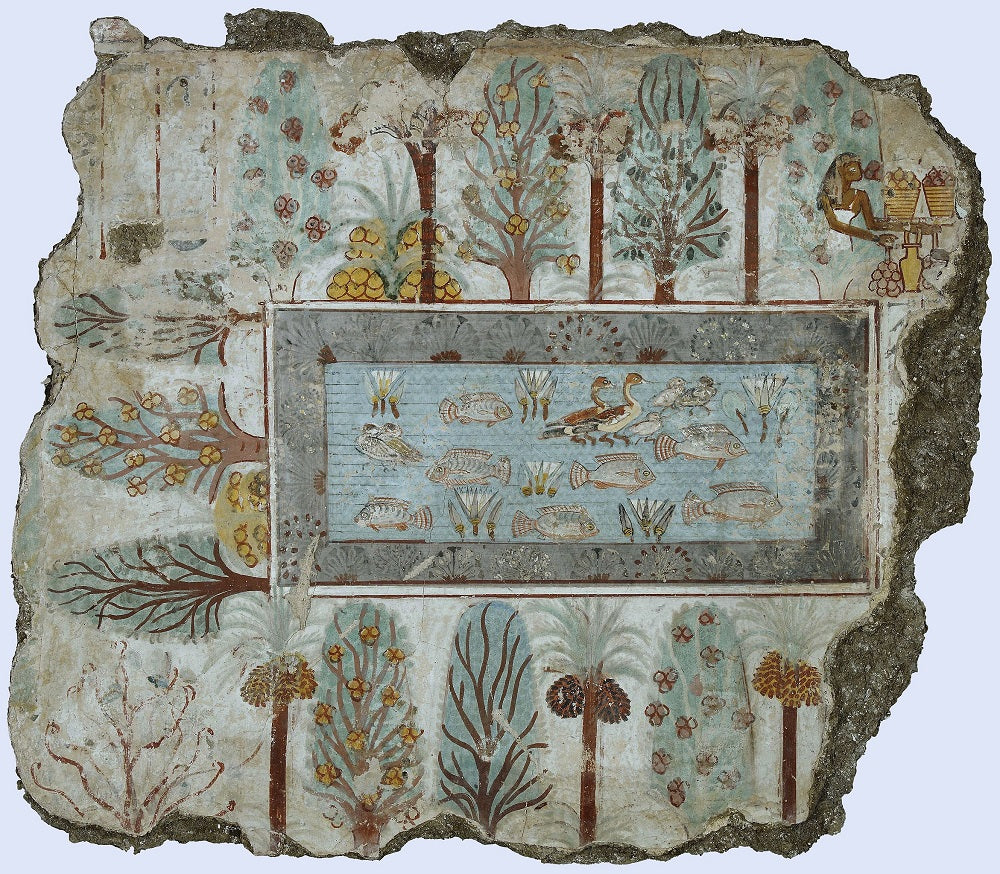 Pond in the Garden, fresco from the tomb of Nebamun, c1380BCE. Discovered in Thebes, Egypt—now in the British Museum. Image: creative commons
Pond in the Garden, fresco from the tomb of Nebamun, c1380BCE. Discovered in Thebes, Egypt—now in the British Museum. Image: creative commons
Gardens have been cultivated for thousands of years, from the Mesopotamian era onwards, initially for fruit and vegetables. The Ancient Egyptians were no exception but, as the country’s wealth grew, so did the nature of its gardens. They became spaces for pleasure and quiet enjoyment, as well as for produce, and more prosperous citizens began to bring the natural world indoors into their homes—and their tombs—in the form of decoration.
Wall paintings and frescoes frequently featured palm trees, papyrus flowers and, above all, lotus flowers (water lilies), which signified creation and rebirth.
When the Casa Ara Maxima in Pompeii was excavated in 1903, having been covered in volcanic ash for almost two millennia, archaeologists looked on in wonder. The house was modest in size but it featured incredibly elegant and detailed botanical wall paintings and frescoes.
 Botanical fresco, Casa Ara Maxima, Pompeii. Image: creative commons
Botanical fresco, Casa Ara Maxima, Pompeii. Image: creative commons
The wealthy merchants and bankers of Renaissance Italy loved their gardens and this, combined with a passion for the visual arts and a deep interest in the natural sciences, led to an explosion of botanical art.
The Medici family, in particular, commissioned paintings, mosaics, manuscripts, printed books and textiles, depicting or inspired by the natural world. The Flowering of Florence, a 2002 exhibition at Washington’s National Galley of Art, was a glorious celebration of the Medici’s abiding love affair with the botanical world. And where the Medici family led, others followed…not least in Northern Europe, where flower paintings were to become quite a thing, bringing colour and brilliance into often dark interiors.
 A Vase of Flowers (c.1716-1722) by Margareta Haverman, Amsterdam, Netherlands (now in the Metropolitan Museum of Art). Public domain.
A Vase of Flowers (c.1716-1722) by Margareta Haverman, Amsterdam, Netherlands (now in the Metropolitan Museum of Art). Public domain.
In 18th century Sweden, the natural world became a major feature of Gustavian style, and continues to inspire Scandinavian interior design to the modern day.
And in 19th Century Britain the towering figure of William Morris would ensure that botanicals were put firmly on the interior design map. So successful was he, that many of his wallpaper and textile designs are still in production—and feature in Pooky’s lampshade collaboration with Sanderson (see below).
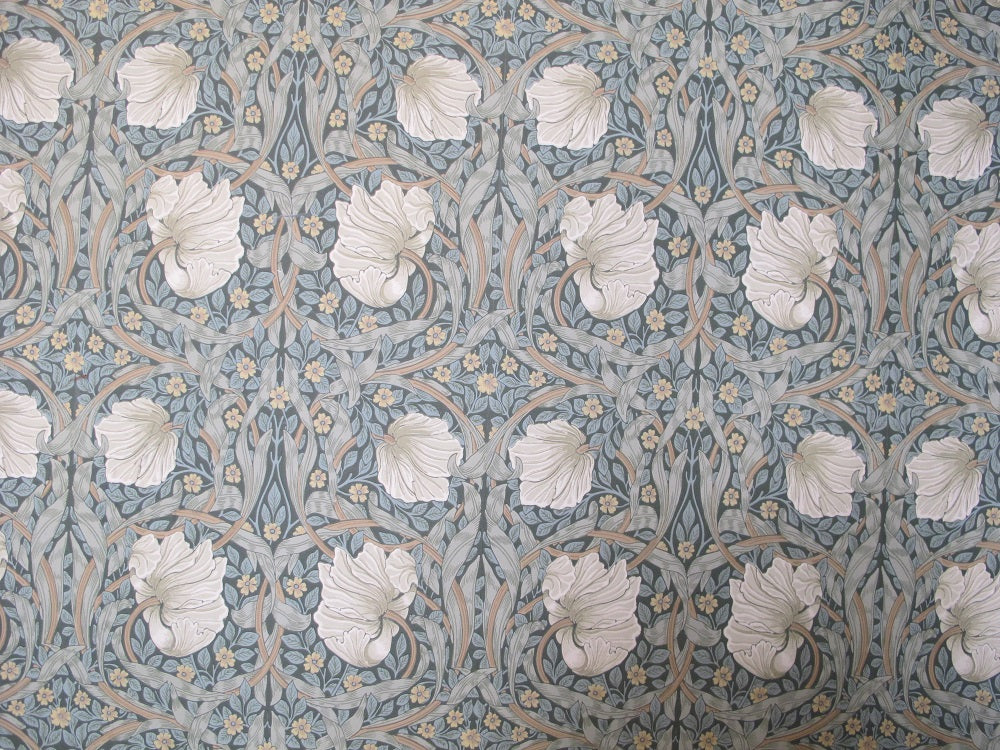 Pimpernel wallpaper, 1876, designed by William Morris. Image: creative commons
Pimpernel wallpaper, 1876, designed by William Morris. Image: creative commons
Nancy Lancaster, doyenne of English country house style, loved all things botanical. The Snow Tree wallpaper and fabric that Nancy designed for Colefax and Fowler—inspired by the wallpaper she had seen in a prima ballerina’s dressing room at Sweden’s Drottingholm Theatre—remains one of her most enduring designs for the company.
Botanical decor - bringing the natural world into your home
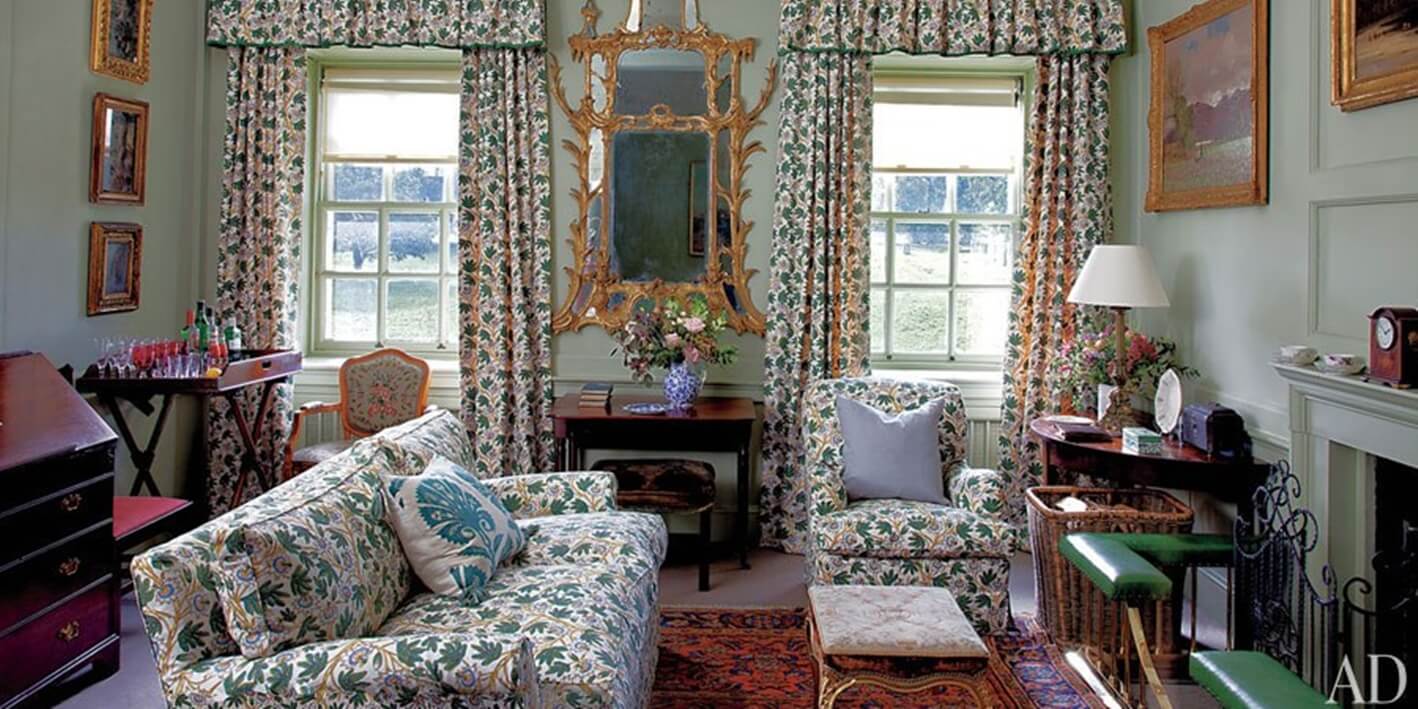 Sitting room by Victoria von Westenholz. Image: Westenholz Antiques and Interior Decoration
Sitting room by Victoria von Westenholz. Image: Westenholz Antiques and Interior Decoration
Many of the designers whom we feature in our “Meet the Interior Designer” blog series also love botanicals, which feature in their rooms for clients - like this sitting room above by the brilliantly talented Victoria von Westenolz. And there are plenty of tempting ideas that you could incorporate into, or adapt for, your own home.
Designer Sarah Laming (aka @ahometomakeyousmile) describes her personal style as “Relaxed Maximalism”. In her Arts and Crafts home there are plenty of botanical touches, from a sofa upholstered in floral fabric to densely patterned bathroom wallpaper, as well as lampshades, and floral paintings. Sarah adds vases and jugs of all sizes, full of brightly coloured blooms, and flowering pot plants, to build up botanical layers. Feast your eyes here.
And just take a look at this striking botanical bedroom backdrop in a bedroom by Amara (@thepajaamahub):
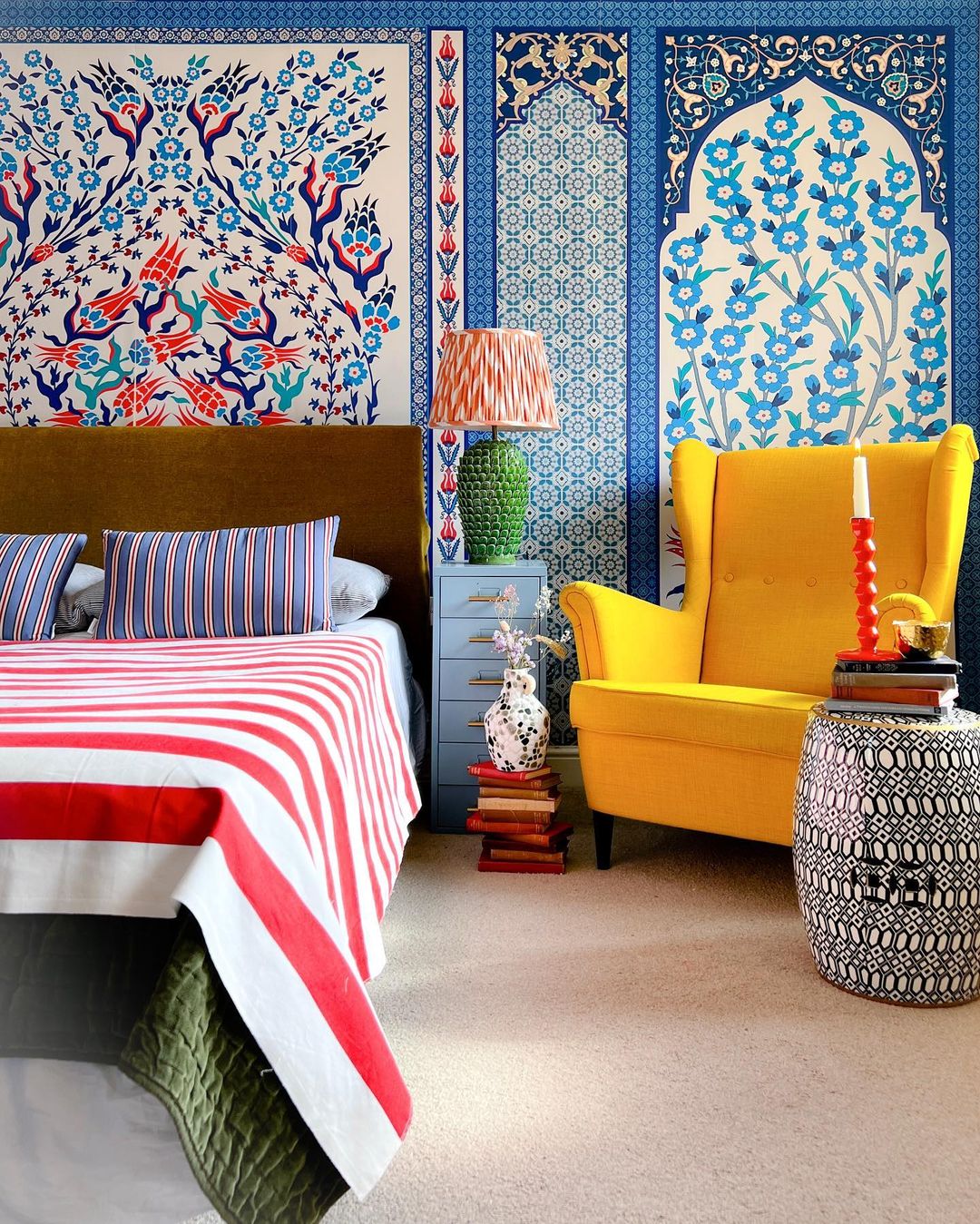 Bedroom by Amara @thepajaamahub, featuring a leafy Pooky Stucco lamp with orange ikat shade
Bedroom by Amara @thepajaamahub, featuring a leafy Pooky Stucco lamp with orange ikat shade
Interior designer Kate Guinness uses seasonal flowers in a subtle way to enhance and add focal points to any room, from large to small, all in perfect harmony with their surroundings:
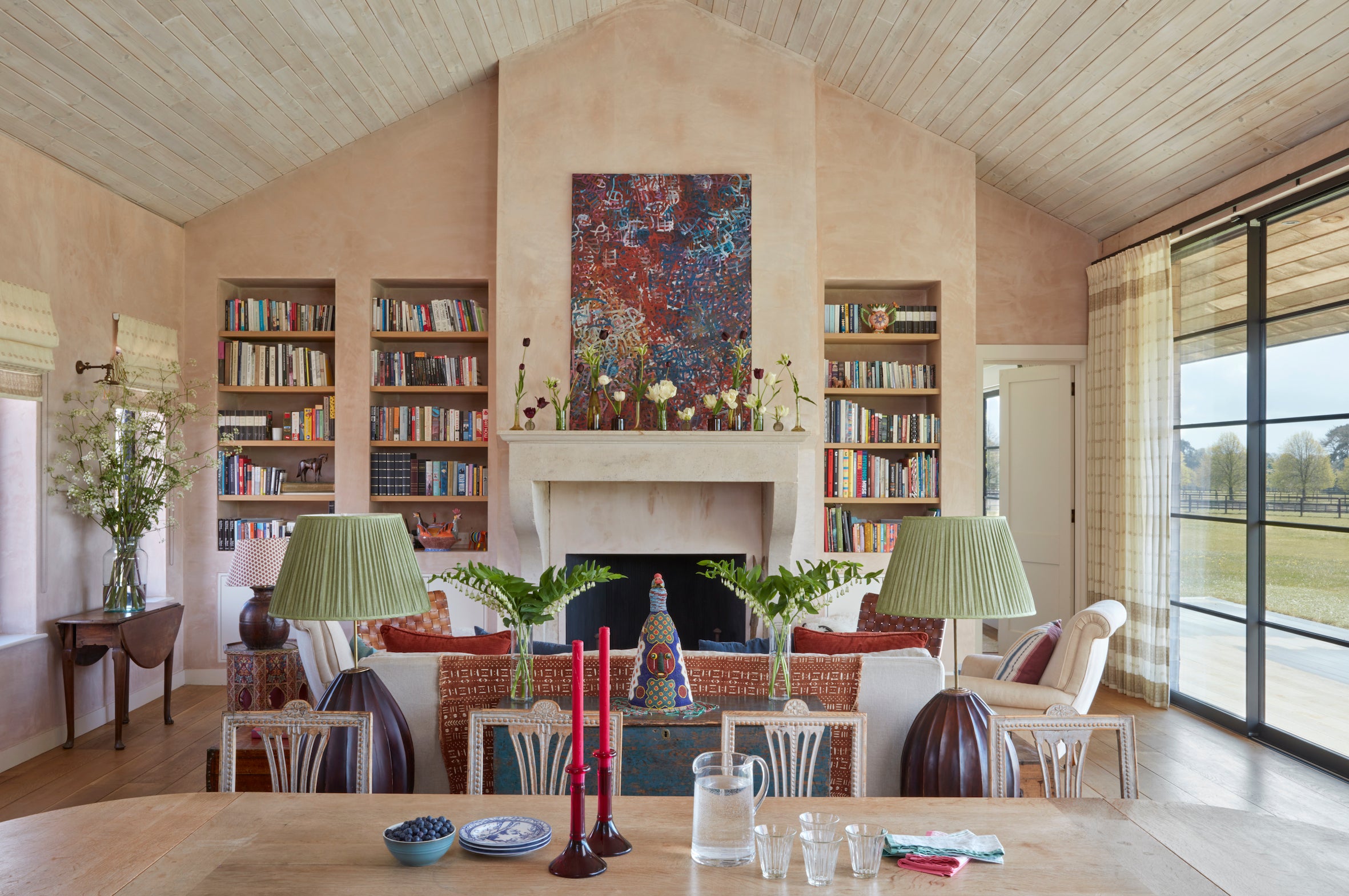 Room by Kate Guinness. Photo: James McDonald
Room by Kate Guinness. Photo: James McDonald
As all these designers recognise, botanical features, in whatever form, lift our spirits. Botanicals are good for you.
If you have a garden or even some balcony, verandah, or patio space, growing your own flowers and plants that you can use to decorate your home, is the simplest way to introduce botanicals. If you don’t have the luxury of outside space, see if there is a flower farm near you. If you live in or near the capital, make a point of visiting one its many fabulous flower markets; Secret London has listed nine of the best here.
For pot plants, try @thelittlebotanical, with whom we recently ran a rather fabulous online competition… they’ll deliver all manner of British-grown plants, as well as pots and accessories, to your door.
Botanical lighting
Lighting is a great way to bring botanical style into your home, whether you’re going for subtle or spectacular.
Botanical table lamps
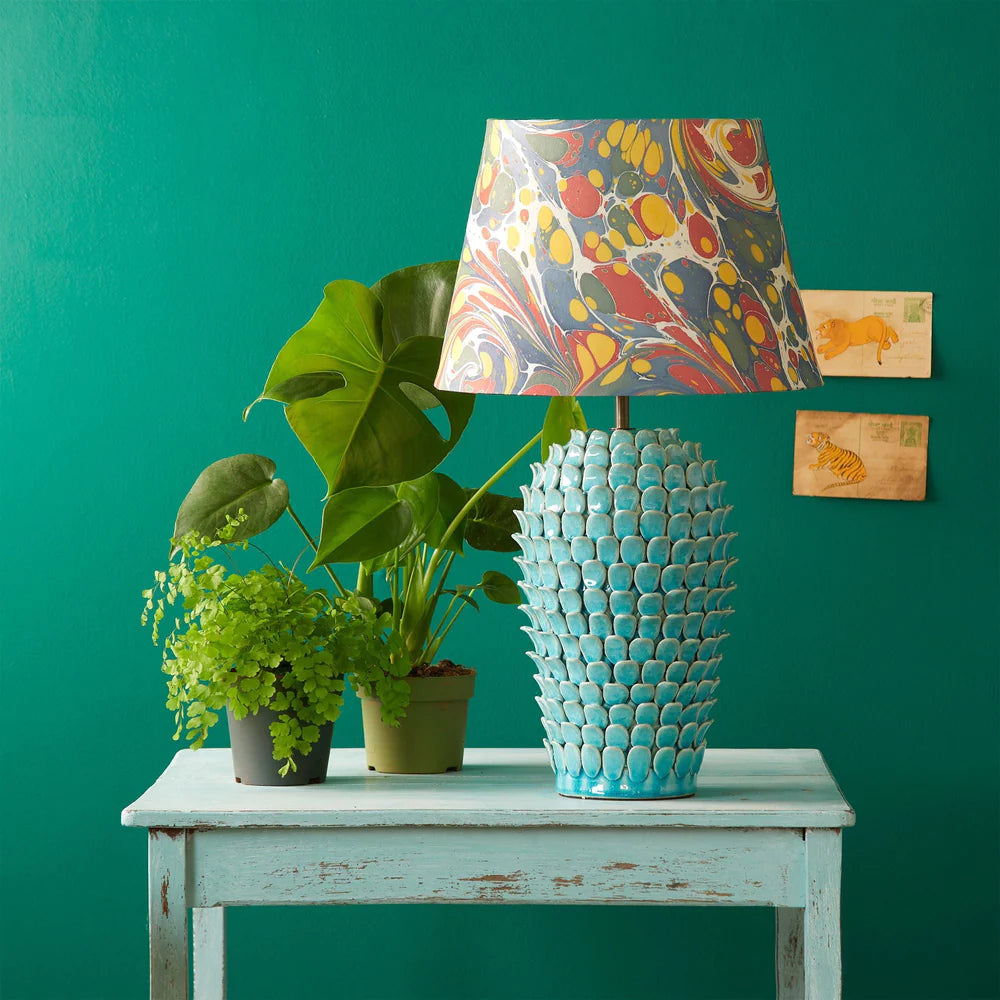 Pooky's Larger Stucco table lamp in turquoise ceramic with its 'stuck leaves'
Pooky's Larger Stucco table lamp in turquoise ceramic with its 'stuck leaves'
Several of our table lamps are inspired by the botanical world: Stucco (above) and Bonello (top) are decidedly leafy and Charles has more than a hint of the pineapple.
But why stop at a pineapple when you can also have a globe artichoke? Meet Anetta…
 Larger Anetta table lamp in stone
Larger Anetta table lamp in stone
Botanical lampshades
But botanicals truly come into their own with lampshades. At Pooky we have dozens of styles and sizes to choose from. Our special collections, featuring designs by Matthew Williamson, Liberty, Morris & co. and Archive by Sanderson are a good starting point.
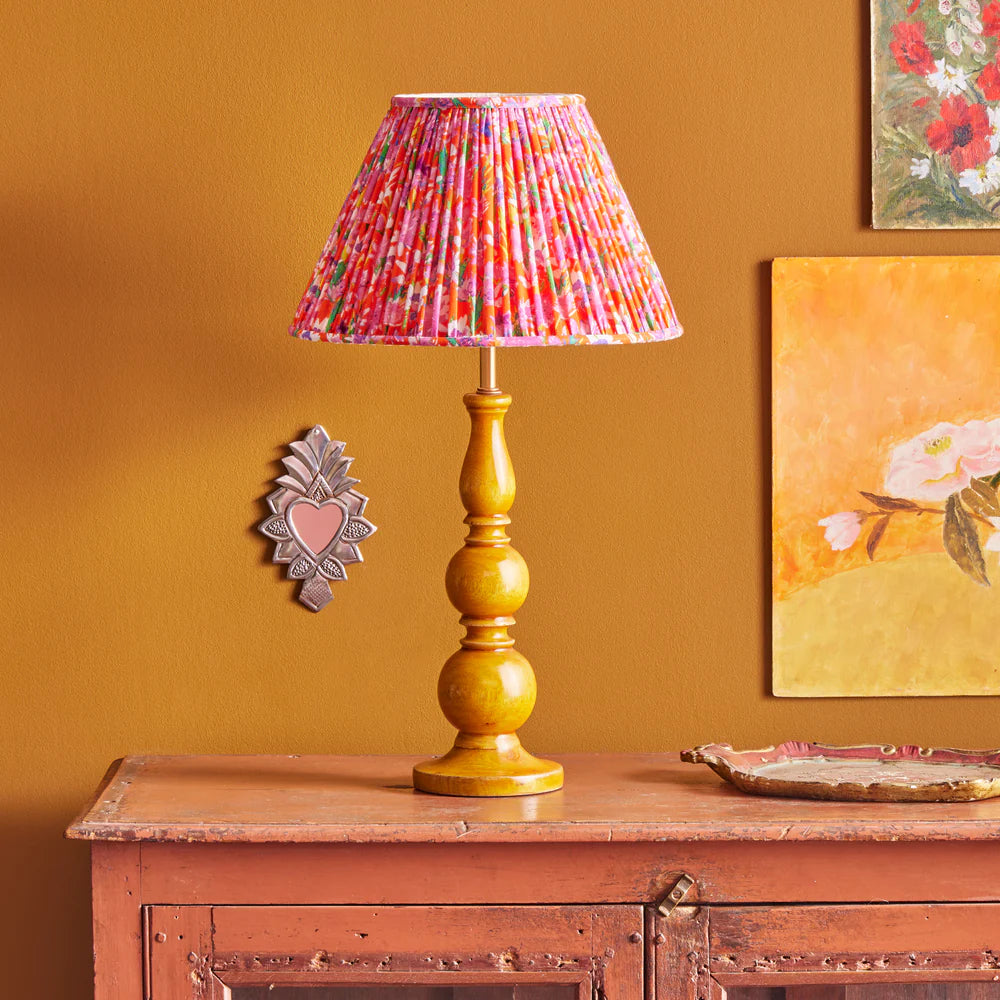 30cm straight empire shade in Red English Meadow by Matthew Williamson
30cm straight empire shade in Red English Meadow by Matthew Williamson
Red English Meadow was created by that master of colour, Matthew Williamson; it started life as a naïve watercolour painting and the patterned fabric became even richer when pleated into a shade. Perfect for a cottage or to bring a touch of the countryside into an urban home.
Who doesn’t love a classic Liberty fabric? This is a larger version of an empire shade, finished in Lapis Poppy Meadow, a strong new colour—and a design that dates back to the Edwardian era. A perfect combination of old and new.
Here’s a Morris & Co version of the 35cm empire shade in Thyme Rosehip linen. The leafy design was taken from an original Morris & Co tile; fabric is soft and finished with velvet tape.
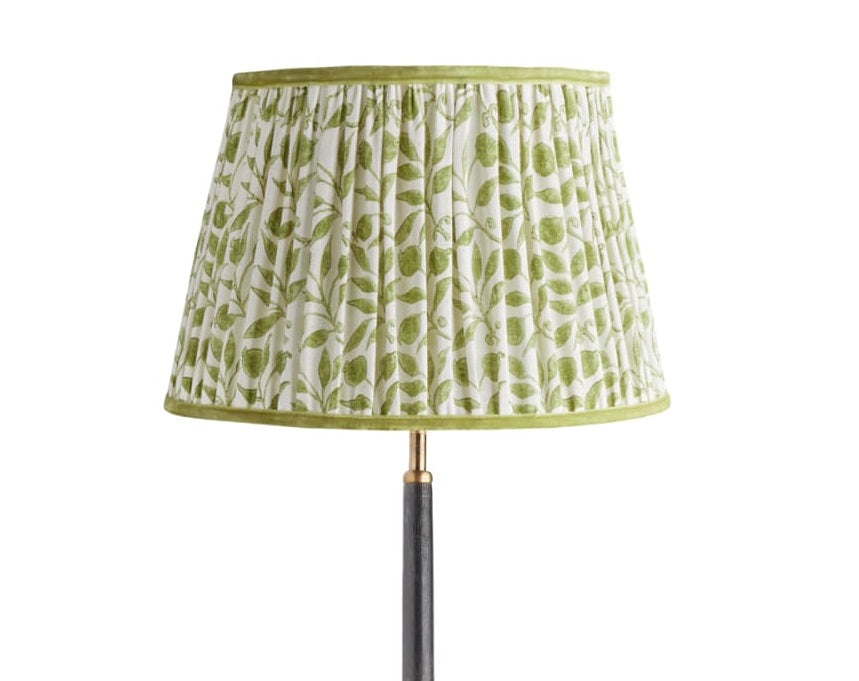 35cm straight empire shade in Thyme Rosehip linen by Morris & co.
35cm straight empire shade in Thyme Rosehip linen by Morris & co.
Even the smallest empire shade deserves to dress up and what better way than by wearing Seratonin Pink Golden Lily from Sanderson’s Archive? This is a reimagined version of the John Henry Dearle’s original design. (Dearle was a protégé of William Morris.) Sumptuous colour and just a hint of decadence…
 30cm empire shade in seratonin pink golden lily from sanderson's 'archive'
30cm empire shade in seratonin pink golden lily from sanderson's 'archive'
Pooky make beautiful lights for beautiful rooms. Take a wander through our enormous range of gorgeous lamps, shades and more.
See also:
Great interior designers: William Morris
Colour theories in interior design and lighting: Green
Timeless maximalism - 6 arts & crafts designers still influencing interiors today
Classic interior design styles and how to light them – Arts and Crafts







